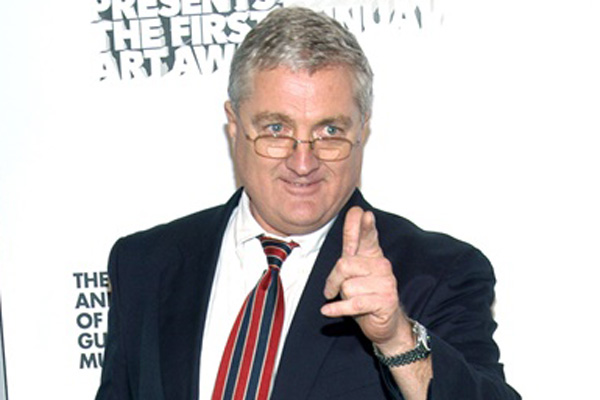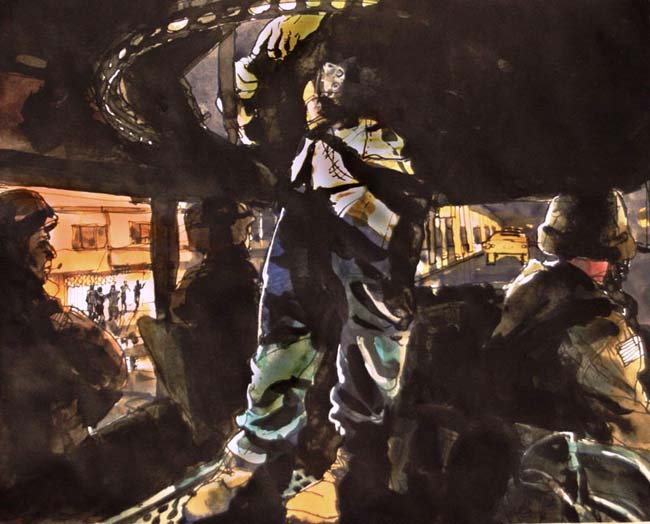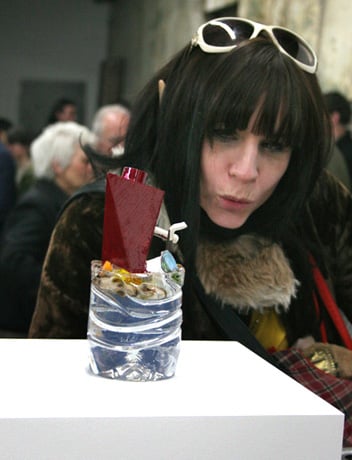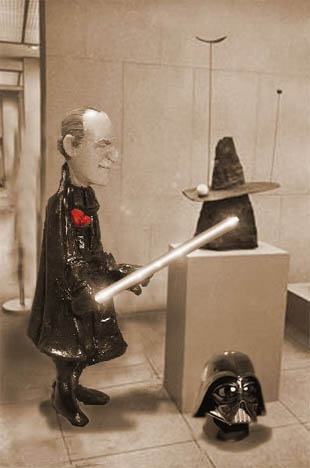Art World
A Look Back at Some of the Highlights of Artnet Magazine on Its 20th Anniversary
The magazine launched this month in 1996.

The magazine launched this month in 1996.

Artnet News

Twenty years ago this month, artnet first launched Artnet Magazine, an online journal—and one of the first online art publishing initiatives in history.
(artnet News, the publication you are reading now, is something of a sequel to Artnet Magazine; the latter ceased publication in 2012.)
Edited for its entire run by painter and critic Walter Robinson, Artnet Magazine was unique. Compared to today’s hyper-driven online publishing landscape, its output was relatively spare, offering up one to three posts a day, with regular news digests appearing on Tuesdays and Thursdays.
Over the course of its 16-year run (1996–2012), it spotlighted a variety of voices. The archive remains, giving a valuable look at the art world that spans the early Internet era. Below is a sampling of some of the very diverse highlights of its output:
—Editor Walter Robinson’s regular, wry, sharply-observed “Weekend Update” column reporting on and digesting the New York gallery world makes for an invaluable record of the scene (“Weekend Update“).
—Charlie Finch, Artnet Magazine’s “Falstaffian Gadfly” (in the Observer‘s formulation), was probably the publication’s most widely circulated voice. His frequent dispatches ranged from a list of his favorite paintings of all time (“My Favorite Fifty“), to his prescient prediction that the success of the High Line would crush the Chelsea gallery district (“Three Dealers“).
—Thomas Hoving, the late director the Metropolitan Museum, became an Artnet Magazine columnist early on, and returned for a variety of contributions and videos in the 2000s. Check out the king of museum populism’s take on the Guggenheim’s Normal Rockwell show way back in 1999 (“Norman’s Conquest”), and his assessment of the return of King Tut fever—a phenomenon that he had personally helped create—in 2008 (“King Tut Is Back!”).

Steve Mumford, Night Patrol (2003)
Image: Artnet Magazine
—Among the most important work that Artnet Magazine ever did was offer an Artnet press pass to the New York painter Steve Mumford. The artist’s “Baghdad Journal,” featuring his watercolors and personal accounts of being embedded with the troops in Iraq during the 2003 US invasion, are all preserved in the archive: “Baghdad Journal.”
—Kenny Schachter may have been voted Best Arts Writer for 2015 by the readers of the Baer Faxt, no doubt for many articles written for artnet News, but he was a columnist for Artnet Magazine before that and penned many a thoughtful ode or diatribe on the art world. Read the one where he said yes to the art boom (back in 2012), his 2008 piece about Art Cologne, and then there’s his account of Art Basel Miami Beach in 2009. Vintage Kenny. Enjoy!
—Brash painter Mark Kostabi, who also ran a Chelsea game show called “Title This” or “Name That Painting,” had a long-running Artnet Magazine advice column for fellow artists. Want to know what artists were worrying about back in 2000? Check it out: “Ask Mark Kostabi.”

Reverend Jen examining Michaela Eichwald’s Volvic Architecture Milfina at Reena Spaulings Fine Art, 2008
Photo by George Courtney
—Reverend Jen, the Lower East Side artist and Queen of Quirk, strapped on her elf ears for a series of dispatches that can legitimately be called “only in Artnet:” “Diary of an Art Star”.
—Heavy-hitting art theorist and scholar Donald Kuspit published a variety of reviews, but perhaps his major contribution was anthologizing his ambitious, wide-ranging A Critical History of 20th Century Art for the site.

Elliot Arkin, Predictions for 2006: The ghost of Phillip Johnson predicts,
“Following the Pixar exhibition, Glenn Lowery forces MoMA to the ‘dark side’ in 2006.”
—A crack team of cartoonists, including zippy satire from Elliot Arkin in New York.
— Michelle C. Cone, historian and scholar (French Modernisms: Perspectives on Art before, During and After Vichy) offered up a sampling of her research on the political paths of French artists during wartime France: “Matisse and the Nationalism of Vichy, 1940-1944”.
—Ben Davis, now National Art Critic for artnet News and formerly an associate editor for Artnet Magazine, published an essay that would become the seed for his 2013 book 9.5 Theses on Art and Class (“Art Class“).
—Serving as Artnet Magazine’s news editor from 2010 to 2012, Rachel Corbett did crack journalism, including breaking a variety of the news about the landmark Prince vs. Cariou legal battle. (Corbett has just been named executive editor of Modern Painters.): “Cariou Fights Copyright Appeal”
—Artist and critic Pedro Vélez (a veteran of the 2014 Whitney Biennial) published a wide-ranging selection of hard-hitting criticism from Puerto Rico, Chicago, and beyond.
—Sarah Douglas, who went on to glory as the editor of current-day ARTnews, passed through the associate editor desk at Artnet Magazine. Here, her early, prescient review of Anri Sala at Marian Goodman: “Ars Poetica”.
—Artnet Magazine also had a well-known, long-running association with Jerry Saltz—in fact, the most accessible archive of the early output of the current New York magazine critic may well be his Artnet Magazine archive, which going all the way back to his 1998 reviews of Wolfgang Tillmans and Kara Walker for the Village Voice.
“In 1998, Artnet was the site that convinced me that if my writing didn’t exist online, it didn’t exist at all,” Saltz wrote in a tribute post in New York Magazine.
History has proved Artnet Magazine spectacularly true in this respect.